From zero to Tebis
A successful start in CNC manufacturing
Theven Modell- und Formenbau has successfully entered the world of CNC manufacturing. The company started out initially as a small two-man workshop in the foundry and auto body model manufacturing business Managing Director Ulrich Theven and his son set up in-house CNC manufacturing and invested in Tebis software and services. With unattended manufacturing, they increased order volume, expanded the company and evolved it to specialize in computer-supported development and manufacturing methods. Now, 13 qualified employees deliver peak performance – thanks in part to the collaborative support of Tebis.
Company
Theven Modell- und Formenbau, Germany
Location
Schwalmtal, Nordrhein-Westfalen, Germany
Focus
Tebis Services
Benefits:
- Reliable unattended manufacturing with Tebis simulation technology
- Templates for 2.5D machining in feature libraries simplify the work and save time
- In the service contract, the Tebis Helpdesk is available free of charge for fast help
Sector
Model making
Mold manufacturing
Published
2019
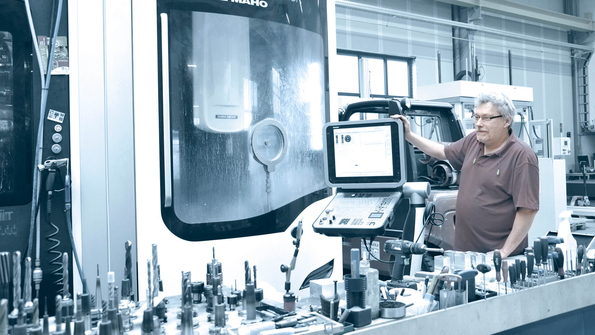

From our first introduction to CNC manufacturing to our collaboration that’s lasted many years, we’ve had nothing but good experiences with Tebis Software and Services. The Tebis technicians are always quick to find the appropriate solution.
Most of the customers of Theven Modell- und Formenbau, headquartered in Schwalmtal, North Rhine-Westphalia, Germany, are from the automotive industry. The product spectrum includes prototype and series dies as well as gauge manufacturing, the design of foam and laminating dies and fixture construction. The transition began when master model maker Ulrich Theven brought his son Tobias into the well-functioning two-man business. "When I started with my father as a precision master mechanic in 2012, we contracted out NC manufacturing to a company in the neighboring town," recalls Tobias Theven, head of CNC machining and foreman.
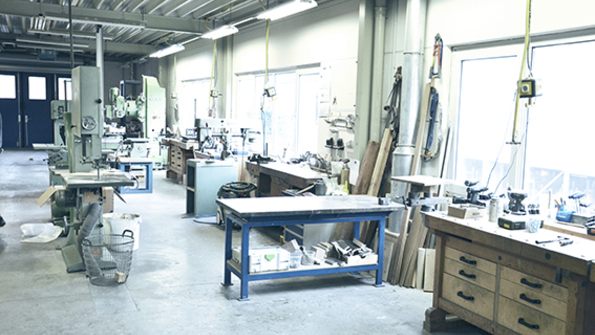

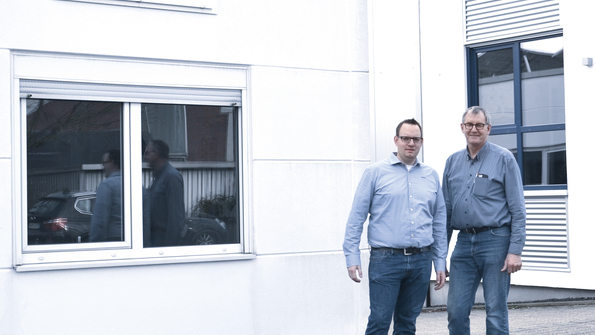
Just two years later, the opportunity arose to construct a new building and to double the production area to more than 900 square meters. Then came the idea: Why not establish the company's own CNC manufacturing? This was risky, explains Theven: "As a trained master model maker, my father knew hardly anything about CNC programming. At the time, I had not yet gained much insight, but I was willing to try. I operated CNC machines in my earlier professional career, but I had not done any CAM programming myself."
Simulation technology means reliability
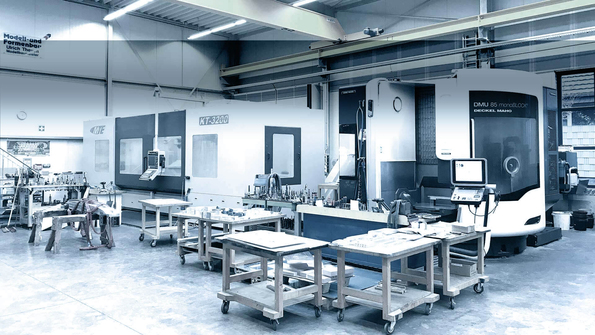
In order to be better positioned for the future, they embarked on this adventure and procured the first 3-axis machine, an MTE KT 3200. It didn’t take long to answer the question about which CAD/CAM system was the right one for them. "Although I didn't know Tebis myself, several employees did. And, what is especially important, our external designer uses Tebis. No one had heard anything negative, and there was a good training and service offer. The decision was easy." Theven entered into a service contract and set up two workstations: one for data import through interfaces (Step, Catia) as well as for CAD tasks (advanced surface design). The second was intended solely for CAM programming. At the same time, Theven invested in Tebis simulation technology. "The simulation possibilities were very important to us, especially since we did not yet have much experience in CNC programming. The collision checking is great and was always reliable. This was and remains a safety net for us."
Quick help from Support
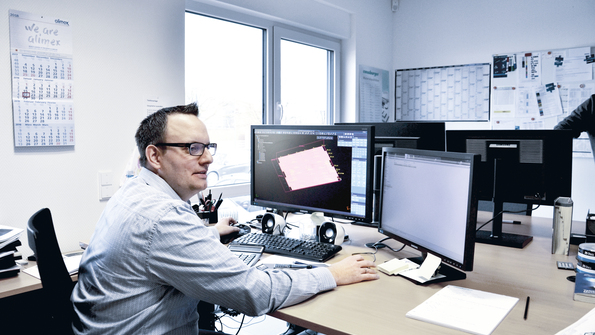
To learn about Tebis and its operation, the trained master precision mechanic spent three weeks attending all of the basic training courses at Tebis headquarters in Planegg, Germany. He then hit the ground running in March of 2014. "At the time, everything was new for us: the software, the machine and the building, plus we had new employees. This was not easy for me; I went straight from the workshop to programming." Tebis Implementation set up the Tebis application, and two months later the time had come: Theven Modell- und Formenbau delivered its first parts milled in-house – on time and to satisfied customers. Theven is just as enthusiastic about the Tebis Helpdesk as he is about the solid work performed by the Implementation team: "We often didn't know how to proceed and could not find the error. We could always rely on the Tebis Helpdesk The technicians immediately helped us with the appropriate solution for every problem, and we also received practical tips for working with Tebis."
Growth through efficiency
The concept of in-house CNC manufacturing was a success. Tobias Theven: "Thanks to the reliable collision checking in Tebis, we were soon milling unattended overnight. We saved time and were rewarded with increasingly full order books." Within a short time, the 3-axis machine was running in two-shift operation. New employees were hired, but the machine was often being used for large parts. "This was slowing us down, so we invested in a 5-axis machine, which meant that we did not have to leave small parts out of the picture, for example," explains Tobias Theven. The DMU85 monoBLOCK started operation in early 2015. This was also being well-utilized in two-shift operation within a short time.
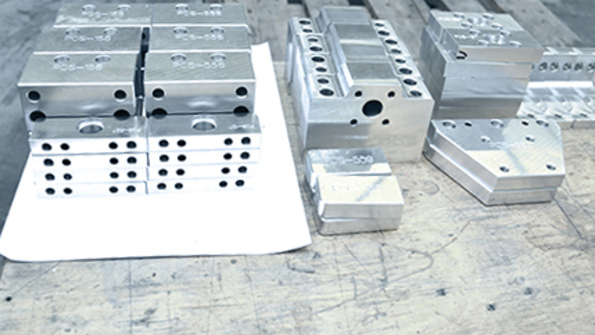
The reliability and speed achieved with Tebis also gave the company more room to be flexible. This requires coordinated work processes and a powerful, individually customized CAD/CAM application. "In today’s environment, we not only have to be fast, but also diversified in order to remain competitive," says Theven. The portfolio was expanded with gauge and fixture manufacturing, for example – and it’s rare that any two parts at Theven are identical. Especially in contract work, the company specializes in milling work for single parts. "How can anything be further automated?" the head of CNC machining asked himself.
Automation:
Features simplify the work
At first, he had to laboriously measure each individual bore, identify an 8 mm bolt and select the corresponding drill bit. Now he swears by the advantages of the Tebis feature library. He created features there such as 2.5D bore features that he can easily access. He explains: "Bores often are repeated. With the saved templates, hundreds of bores can now be programmed in a flash. The good thing is, Design and CAM manufacturing speak the same language." The designer has the exact specifications of which color to select for which type of bore, fit and thread. "All we have to do is assign the correct feature, based on the color for CAM programming. Tebis takes the data from the geometry, and the NC programs are already complete. This even works for files imported from other programs," says Theven.
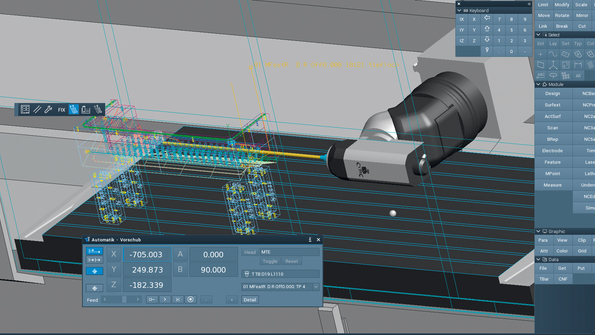
Currently, indicators point to further growth. In 2018 the managing directors replaced their first milling machine with a newer model that has a stepless pivoting milling head and a speed of 12,000 rpm. Tebis Implementation again set up the machine. "This went very fast and everything is running really well. We are ready for new orders,” says Theven. “From our first introduction to CNC manufacturing to our collaboration that has lasted many years, we have had nothing but good experiences with Tebis Software and Services."


